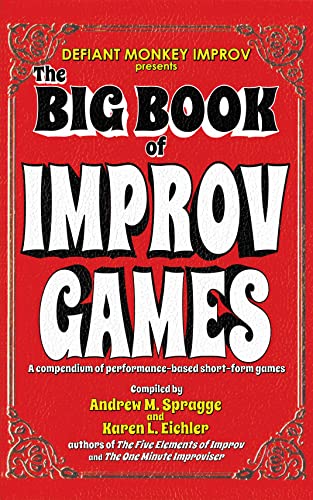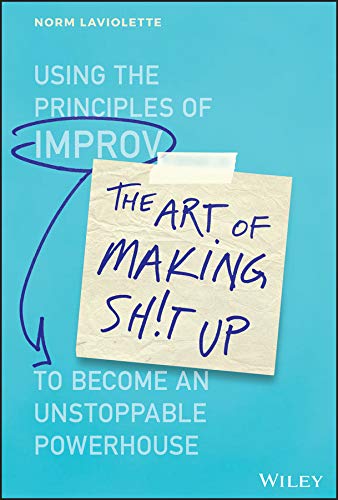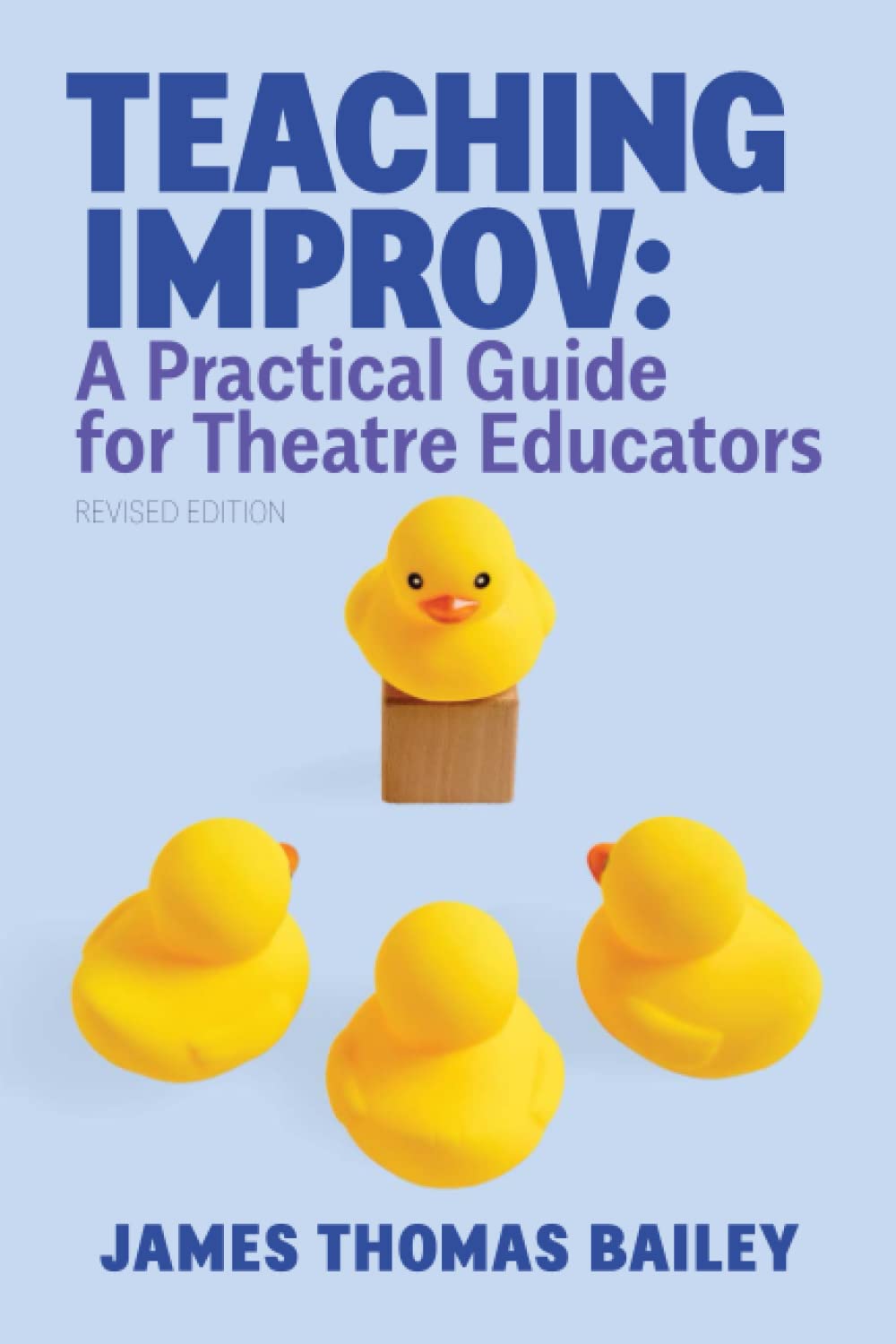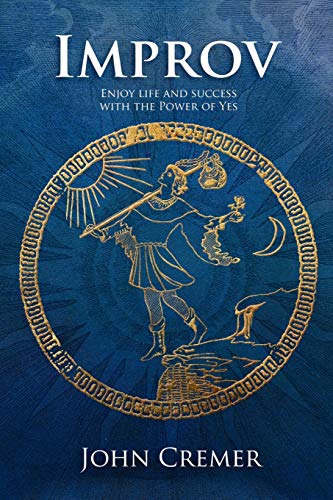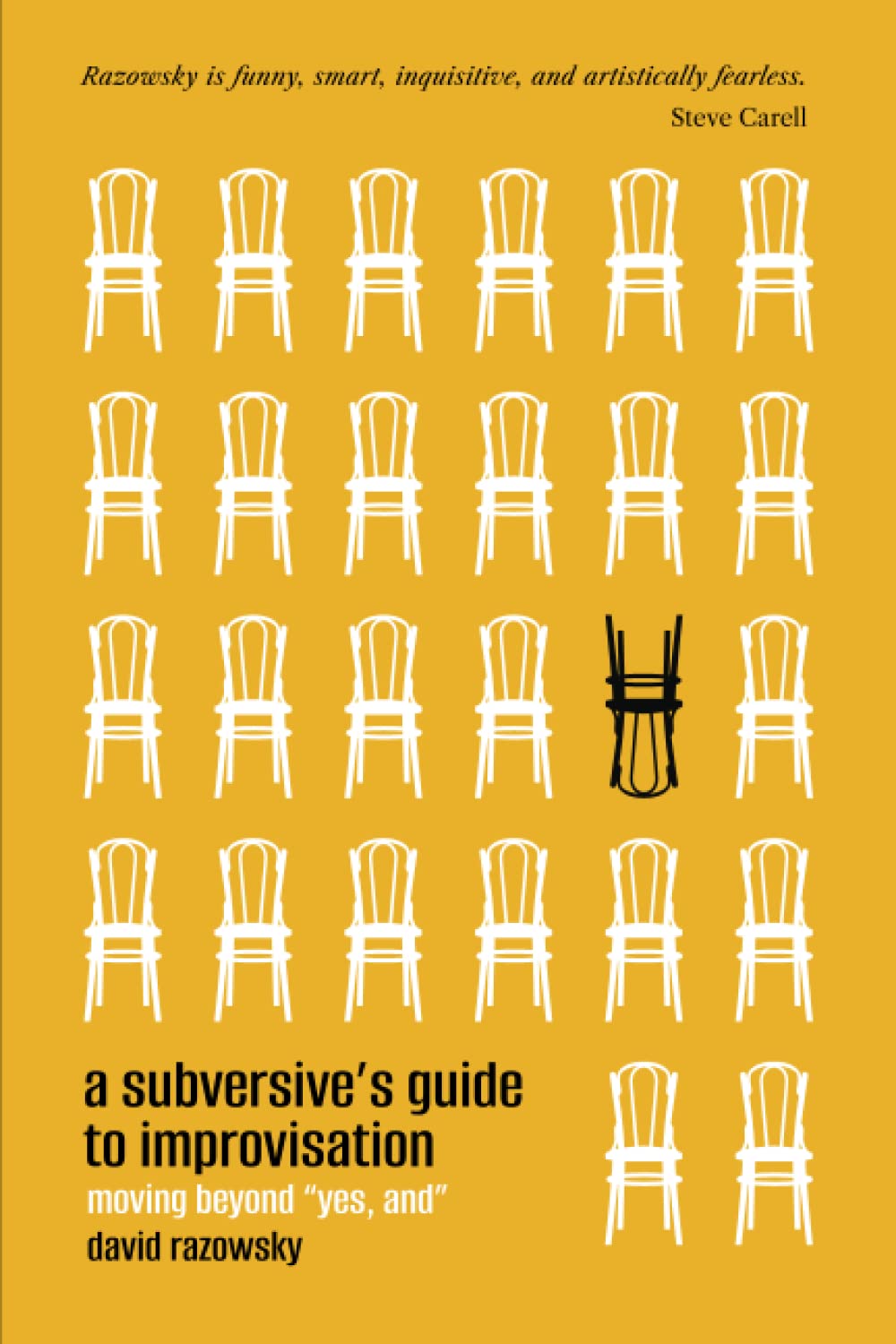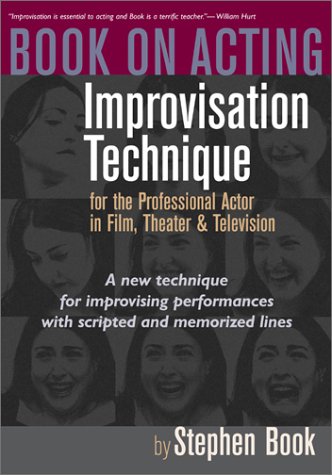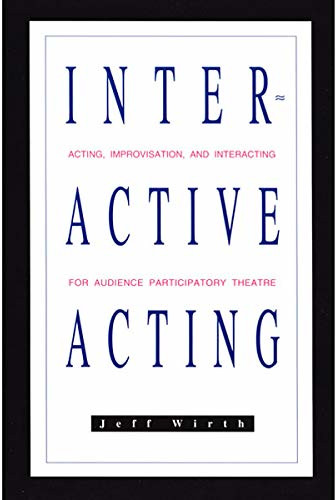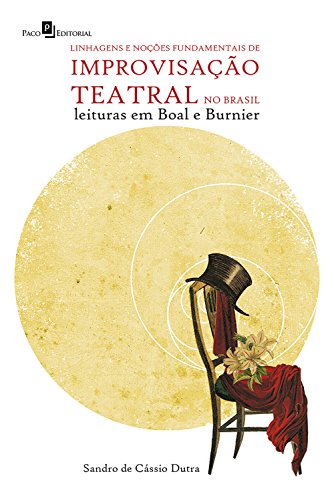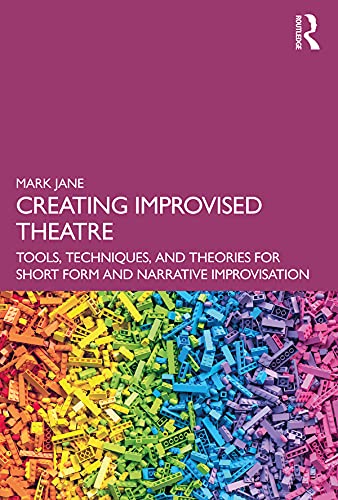The Big Book of Improv Games: A compendium of performance-based short-form games What would you do with over 500 improv games? Would you like to own the most comprehensive collection ever published? Who do you know that loves improvisation? The product of years of research, The Big Book of Improv Games will amaze you as you flip through it, discovering page after page of performance-based games, many that will be completely new to you! Are you ready to become an Improv Powerhouse? Feed your passion for improv, go beyond the basics, and turn good improv into great improv with The Big Book of Improv Games! You’ll discover over 500 ways to make stuff up, along with full, expert descriptions, tips, and variations so complete anyone from beginner to expert can pick up the book, read through any game, and play it with confidence! Games are divided into convenient categories, making it easy for you to design an entertaining, varied play set for your show, jam, or practice: Scene Games Quirky Games Non-Scene Games Guessing Games Singing Games Step-Out Games Games are cross-referenced with similar games so you can find new favorites to try! Also included are helpful appendices, including: Glossary…
Improv books
Here you will find the most complete list of theatrical improv books, whether they are improv games, long-form improv or essays on the state of improv.
The Art of Making Sh!t Up: Using the Principles of Improv to Become an Unstoppable Powerhouse Work together to up your chances of business success The Art of Making Sh!t Up combines the lessons learned from a personal journey with the teachings derived from years of honing valuable skills through performing and presenting to thousands of people to demonstrate how working together has helped others found and grow several multimillion-dollar companies. By focusing on topics that serve as pain points and detailing the tools and techniques of improv, this book helps people and organizations utilize new skill sets to be more productive, more accepting, and more “all in” to create a stronger teammate and team. Remove the fear of failure Recognize when and how to trust your instincts Celebrate and embrace the ideas of others Listen effectively—to both people and your environment Thinking is hard. Listening is easy—and is most often the springboard to huge ideas. Find out how it can work for you with The Art of Making Sh!t Up.
Improv isn’t just fun and games (though it’s fun and there are a lot of games!). It’s a powerful set of skills that can lift an actor–and indeed, an entire ensemble–to another level. James Thomas Bailey is an experienced classroom teacher, producer of the longest running stage production in Los Angeles (decades) and creator of the largest teen improv program in the United States. In this book, he’s created a practical, humorous guide to teaching improvisation for theatre educators and directors at all levels. Included are sequential lessons and methods for applying them—ten weeks of curriculum if taught in full—complete with a “script” for teaching and debrief questions for greater conversation and even more understanding. Ready to give yourself a shot in the arm and a pat on the back?! Go! Published and performances licensed by YouthPLAYS (https://www.youthplays.com), publisher of plays for young actors and audiences.
This book, by award-winning speaker and trainer, John Cremer, provides context for what occurs during an improvisation session and a clear D.I.Y guide to running a basic session yourself. By applying these clear lessons you will be able to: • Bond and inspire a team • Open new neural pathways and overcome reluctance and nervousness in participants • Find different angles for problem solving and brainstorming • Feel confident on your feet in front of people • Have a great laugh Improvisation skills are applicable in all areas of life especially in the professional world where they lend themselves to enhancing creativity, team building, innovation, problem solving, presentation skills, negotiation, self confidence, management, client engagement, humour, laughter and positive thinking. Also known as improv or impro these personal development techniques are powerful and effective.
A Subversive’s Guide to Improvisation: Moving Beyond “Yes, And” Hey, improvisers, you can do whatever you want. In A Subversive’s Guide to Improvisation, Razowsky throws conventional improv wisdom on its head by giving you a unique take on how to create masterful improv scenes. He describes how his life philosophy and improv methodology have evolved on his journey from struggling actor to one of the world’s most respected improvisers and coaches. The challenge for most improvisers is sticking to “the rules” and believing “Yes, and” is the magic formula for a successful scene. Characters meander and travel from a state of fluidity to a mess of frustration and ask, “How did I go wrong?” A Subversive’s Guide to Improvisation provides methods and exercises that teach you to connect to your partner and the scene without worrying about responding with “yes, and.” Over 30 groundbreaking exercises will teach you how to: * Freely express your feelings. * Focus on the present. * Ask questions. * Say “no” to energize your scene. * Start a scene without establishing who, what, and where. David Razowsky studied, performed, taught, and directed at Second City with Stephen Colbert, Steve Carell, and Michael Keegan-Key, among others….
Book on Acting: Improvisation Technique for the Professional Actor in Film, Theater, and Television Stephen Book is a top Hollywood acting coach and teacher and a theatre director. His students have won Oscars, Emmys, Tonys, Obies, and Grammys. Thirteen of his present or former students are featured in either starring roles or as cast regulars in the current primetime television schedule. This book contains film and television scenes in which Book-coached actors, used his Improvisation Technique to create their performances. These scenes, showing the actors’ performance choices, demonstrate the use of Improvisation Technique in different genres of acting. Well-known theatre and film scenes are included, as well as scenes from such TV shows as ‘Frasier’, ‘Melrose Place’, ‘Star Trek: Voyager’, ‘LA Law’ and ‘The Practice’.
Interactive Acting: Acting, Improvisation, and Interacting for Audience Participatory Theatre A Ground-breaking guide to audience participatory theatre. Interactive acting is a step-by-step handbook that teaches actors how to successfully perform in audience participatory theatre. This book includes: – Descriptions of interactive performances – Methods to draw out good audience participation – Techniques to handle the unexpected – Performance tactics for off-stage environments – A concise review of improvisation skills – And much more
Linhagens e noções fundamentais de improvisação teatral no Brasil: Leituras em Boal e Burnier Doctoral thesis – Federal University of the State of Rio de Janeiro, 2013 In a historical-theatrical perspective, the author investigates what he considered the main sources of the conceptions of improvisation, namely, those coming from the Russian director and theorist Stanislavski and the Italian branch (Commedia dell’Arte and Eugenio Barba). This book is the result of an attempt to understand the fundamental notions of improvisation in Brazilian theater, present in the conceptions of Augusto Boal and Luís Otávio Burnier. In a historical-theatrical perspective, the author investigates what he considered to be the main sources of the conceptions of improvisation, namely, those coming from the director and the theorist. The Russian Stanislavski and the Italian part (Commedia dell’Arte and Eugenio Barba). Through the analysis of these references, followed by the investigation of the works of Boal and Burnier, the author suggests that, indeed, it is possible to establish significant comparisons between the conception of Stanislavski and Boal, on the one hand, and that of Barba (directly related to Commedia dell’Arte) and Burnier, from another. From these convergences, two improvising lineages are established: Stanislavski-Boal; commedia dell’arte/Barba-Burnier.
An immensely valuable resource book for drama leaders, House of Games is a how-to book for building up drama troupes and keeping them creative. House of Games is sure to take its place alongside the most established drama method texts. Following on from Keith Johnstone’s famous Impro and Augusto Boal’s Games for Actors and Non-Actors, Chris Johnston’s book provides ideas and guidance for drama groups of all kinds.
Creating Improvised Theatre: Tools, Techniques, and Theories for Short Form and Narrative Improvisation This book is an updated version (and in english) of the french book Jeux et Enjeux (2018). This book provides a modern view of improvised theatre based on the rapid evolution of this art form, shedding new light on classic theories as well as developing lesser known and emerging techniques, such as the Trance Mask. Instead of simply referencing classic theories, the book revisits them and places them in the context of contemporary improvisation techniques. Designed as a practical support, this guide contains over 130 exercises that allow its theories to come alive in workshops, rehearsals, and performance. The book is divided into four sections: * Nuts and bolts: The fundamental tools of improvisation to explore how to be spontaneously creative, build with your partner, and learn from masks to discover your scene instant by instant. * Short form: Techniques for scene work and short form performance, including how to get the most out of a scene, remain connected to the relational stakes, provoke change (physical, status, and emotional), and maintain a playful attitude. * Narrative improvisation: Theories to help navigate long form narrative-based shows with “narrative…
